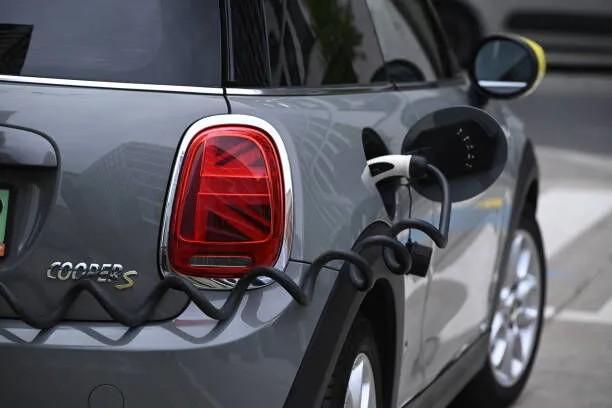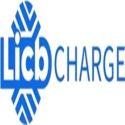Notifications

8 minutes, 18 seconds
-140 Views 0 Comments 0 Likes 0 Reviews

Introduction
As electric vehicles (EVs) continue to rise in popularity, it's becoming increasingly important for both new and seasoned EV owners to understand how to effectively use EV charging stations. Charging an EV is a distinct process compared to refueling a conventional gasoline-powered car, and the experience can vary depending on the type of charging station, your vehicle’s compatibility, and the charging network. This guide will provide you with everything you need to know about EV charging stations, including the types of chargers, connectors, costs, and tips for efficient charging sessions.China EV Chargers Manufacturer provides innovative and reliable electric vehicle charging solutions to meet the growing demand for sustainable transportation.
Types of EV Charging Stations
EV charging stations come in three main types, categorized by their power output and charging speed. Each type serves different needs, ranging from overnight home charging to fast top-ups during long road trips.
Level 1 Charging
Level 1 charging is the simplest form of EV charging, utilizing a standard 120V household outlet. This method is generally included with the purchase of an electric vehicle. While it is convenient, Level 1 charging is the slowest option, providing only 3 to 5 miles of range per hour. It’s best suited for overnight charging at home or emergency top-ups when other options aren’t available. However, it’s not practical for daily use, especially for those with long commutes or frequent charging needs.
Level 2 Charging
Level 2 charging is the most common method for both home and public charging. It requires a 240V outlet, similar to those used for appliances like dryers or ovens. Level 2 chargers can add 20 to 25 miles of range per hour, making them considerably faster than Level 1 chargers. Many EV owners install Level 2 charging stations at home for everyday use, and public Level 2 chargers can often be found at workplaces, shopping centers, and parking garages. This type of charging offers a balance between speed and accessibility, making it ideal for most EV drivers.
DC Fast Charging (DCFC)
DC Fast Charging, also known as Level 3 charging, is the quickest way to charge an EV. These stations deliver high-speed direct current (DC) power directly to the vehicle’s battery, bypassing the onboard converter. DC fast chargers can charge a battery to 80% in just 20 to 60 minutes, depending on the vehicle and charger. Some ultra-fast chargers can deliver up to 350 kW, allowing certain EVs to gain hundreds of miles of range in as little as 15 minutes. DC fast chargers are essential for long road trips and quick public charging needs, but they are less common and typically more expensive to use than Level 1 and Level 2 chargers.
Types of EV Charging Connectors
There are various connectors used for charging EVs, each designed for different types of charging stations.
SAE J1772
The SAE J1772 connector is the standard for Level 1 and Level 2 charging in North America. It is used by most electric vehicles, except for Tesla, which requires an adapter to connect to J1772 chargers. This connector is widely available at public charging stations and is the most common choice for home charging setups.
CCS (Combined Charging System)
The CCS connector is primarily used for DC fast charging and is becoming the most widely adopted standard in North America and Europe. It combines the J1772 connector with two additional DC pins, enabling high-speed charging. Most modern EVs (except for Tesla and some older models) use CCS connectors for fast charging.
CHAdeMO
CHAdeMO is an older DC fast-charging standard, mostly used by Japanese automakers like Nissan and Mitsubishi. While once widely used, the adoption of the CCS standard has led to a decline in CHAdeMO’s popularity. Some charging stations still feature CHAdeMO connectors, but their availability is shrinking.
Tesla Supercharger Network (NACS)
Tesla vehicles use the North American Charging Standard (NACS), which was previously exclusive to Tesla's Supercharger network. However, Tesla has begun to open its network to non-Tesla vehicles in some regions, and other manufacturers are starting to adopt the NACS connector. Tesla Superchargers are known for their speed and reliability, making them the preferred option for Tesla owners.
Key Considerations Before Charging Your EV
Before you plug in your EV, it's important to keep a few key factors in mind to ensure a smooth charging experience.
Charging Station Compatibility
Not all charging stations work with every EV. Before heading to a public charger, make sure it supports your vehicle's charging port and connector type. For instance, Tesla owners may need an adapter to use non-Tesla chargers, and non-Tesla drivers should verify whether a Tesla Supercharger is compatible with their vehicle.
Charging Speeds and Times
Charging speeds vary between stations, so choose one that meets your needs. If you're in a hurry, a DC fast charger is your best bet, but keep in mind that not all EVs can handle the highest charging speeds. Level 2 chargers are ideal for longer stops, like at work or during shopping trips, while Level 1 chargers are better suited for overnight use.
Charging Costs
The cost of charging your EV can vary depending on the charging network and location. Public networks like Electrify America, ChargePoint, and Tesla Supercharger Network may charge based on kilowatt-hours (kWh), by the minute, or by the session. Some networks also offer membership plans for discounted rates. Home charging is generally the most cost-effective option, especially if you can take advantage of off-peak electricity rates.
Planning for Public Charging Stations
Planning ahead is crucial, especially for long trips. Use mobile apps like PlugShare, ChargePoint, and A Better Routeplanner to find charging stations along your route, check their availability, and read reviews from other EV drivers. These apps provide real-time updates on charging speeds, costs, and connector types, which will help you plan your charging stops efficiently.
Tips for Using EV Charging Stations
Carry the Right Adapters
If you own a Tesla or a vehicle with a less common connector, be sure to carry the necessary adapters to access a broader range of charging stations.Know more about Google SEO Directory
China EV Chargers EV Charger Manufacturer Smart EV Chargers Electric Car Chargers Electric Vehicle Chargers Electric Car Charging Stations

